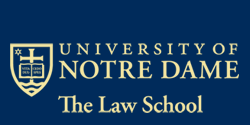Document Type
Article
Publication Date
2001
Publication Information
76 Notre Dame L. Rev. 961 (2001).
Abstract
The Rabbis of the Talmud were a community for moral discernment—a community commissioned by God to interpret the Word of God. Their story is theology. Michael Scanlon, a modem Roman Catholic thinker, assumes such a theology and adds anthropology.
The Rabbis assume and Scanlon describes a community for ethical discernment. It is a perception—somewhat empirical, somewhat theological—that is important and neglected for lawyers in academic jurisprudence and in religious legal ethics. My argument here is that what lawyers should do about "ethical dilemmas" in professional practice can be discerned in the sort of community the Talmud describes, and Scanlon describes, better than in "professional" committees that propound and interpret ethical rules.
I propose to add to Scanlon's anthropology something that is clear if implicit in the rabbinical story—an advertently theological and "sectarian" bias. I propose to focus, more narrowly than Scanlon does, on the local congregation of believers, Jewish and Christian, to suggest that the local church (and its Jewish congregational counterpart) is a privileged "moral tradition with . . . 'dangerous memories' of love overcoming hatred, justice prevailing over injustice . . . peace avoiding conflict" and "care triumphing over indifference."
Recommended Citation
Thomas L. Shaffer,
Legal Ethics and Jurisprudence from Within Religious Congregations,
76 Notre Dame L. Rev. 961 (2001)..
Available at:
https://scholarship.law.nd.edu/law_faculty_scholarship/246
Included in
Jurisprudence Commons, Legal Ethics and Professional Responsibility Commons, Religion Law Commons


Comments
Reprinted with permission of the Notre Dame Law Review.